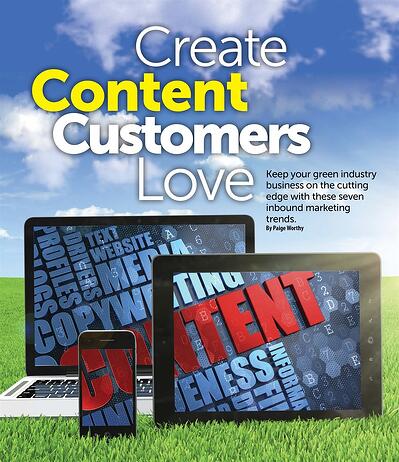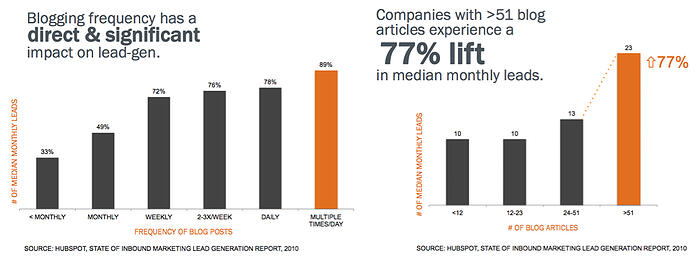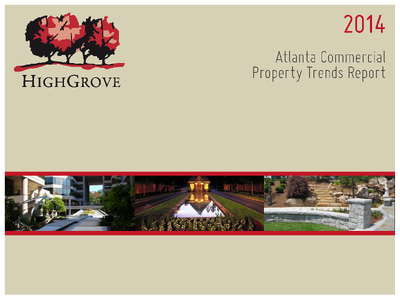Topics: Content Marketing Sales Advertising Email Marketing Recruiting
7 Inbound Marketing Trends for Green Industry Companies
 Author: Paige Worthy
Author: Paige Worthy
 This article was written by our client services director, Paige Worthy, and originally appeared as the cover story in the November 2014 issue of Turf Design Build Magazine.
This article was written by our client services director, Paige Worthy, and originally appeared as the cover story in the November 2014 issue of Turf Design Build Magazine.
At Landscape Leadership, we live and breathe inbound marketing.
But what is it, really? Well, when HubSpot founders Brian Halligan and Dharmesh Shah came up with the term “inbound marketing” eight years ago, they defined it as such: “a methodology that focuses on creating quality content that pulls people toward your company and product.”
It’s a process of attracting prospects and converting them into leads, closing them as customers and ultimately delighting them to the point where they become evangelists for your cause. It’s about creating content people love: the right message, in the right place, at the right time.
That’s in direct contrast, of course, to practices that push marketing messages at prospects, regardless of their relevance — whether they want them or not. (Think dinnertime cold calls from telemarketers, mailboxes full of glossy postcards, loud television commercials.)
As consumers get savvier, they have a lot more control over the buying process and are much more judicious about who they do business with. Inbound marketing is becoming the norm.
But it’s not as simple as creating a blog and Facebook page, and occasionally posting on a whim. There’s no “set it and forget it” in inbound.
It takes buy-in from your entire organization, and commitment to create consistent, high-quality content. It also takes a commitment to ongoing education.
Whether you’re seasoned at using inbound to educate prospects and generate leads or are just getting started, you have to stay on the cutting edge or risk falling behind.
Here are seven inbound marketing trends to consider implementing for your green industry business.
Blogging: Content Is Still King
According to a timeline printed in New York Magazine A Swarthmore College student started the first-ever blog in 1994, five years before the first large-scale blogging platform, Blogger, launched in 1999. Blogging for business took a bit longer to catch on: Microsoft and Macromedia started their company blogs in 2002 and 2003, respectively.
Fast-forward to today — content marketing is all the rage for businesses large and small, including green industry businesses.
Does your company have a blog?
The thought of penning 500-word articles on the importance of regular aeration and overseeding may not appeal to you, but blogging is a fantastic way to educate potential customers with your expertise and insight. Sharing your knowledge with prospects also fosters credibility and trust — which are crucial to your relationship — before one of your salespeople even picks up the phone.
According to HubSpot’s 2010 State of Inbound Marketing Lead Generation Report, companies with more than 51 blog posts on their website experience a 77 percent increase in median monthly leads generated.
Blog content isn’t always sexy, but the need to create it isn’t going away anytime soon.

Supplementing With Long-Form “Premium” Content
Like blog content, your primary aim with longer-form “premium” content — think case studies, buying guides, whitepapers, infographics, worksheets and templates — should be to educate. Provide valuable knowledge and insight for your customers and prospects; in time, they’ll come to see you as the go-to expert on the topics they’re looking for information on — if they don’t already — and when they’re ready to make a hiring decision, you’ll be top of mind.
 We worked with one of our clients, HighGrove Partners in the Atlanta area, to create a guide to commercial property trends for the year in early 2014.
We worked with one of our clients, HighGrove Partners in the Atlanta area, to create a guide to commercial property trends for the year in early 2014.
In order to download the guide, site visitors have to fill out a form with their email address and a few other details about themselves. Since we published it, 70 individual visitors have filled out the form to download it — 41 of them brand new contacts that could be prospects for HighGrove. Nine of them are now customers.
This educational, compelling long-form content not only positions you as a thought leader in your industry, but it also helps you generate leads without making a single cold call. That’s the beauty of inbound!
Sharing Better Visual Content
They say a picture’s worth 1,000 words — they tell a story beautifully and succinctly. But did you know that in inbound marketing, a picture may be worth 1,000 likes or page views, too? (That is, if you play your cards right.)
A November 2012 HubSpot survey revealed that a Facebook post with a photo attached generated 53 percent more likes than the same content shared without photos. And it makes sense, right? We’re an overstimulated society with a short attention span — so the more captivating the visual, the greater chance of success.
This is fantastic news for the green industry! Ours is an industry where healthy and beautiful translates to bright colors everywhere: Lush, green turfgrass; sprawling beds filled with vibrant seasonal blooms.
Sharing gorgeous, compelling visual content extends far beyond Facebook posts, of course. Be intentional about the photos you use on your website’s homepage and other pages. Don’t choose just any photos to accompany your blog posts. Think of your audience; share aspirational visual content that encourages them to dream bigger and think of the possibilities.
Paying To Play: Social Advertising
 If you maintain a Facebook Page for your business, you may have noticed that your posts — everything from quirky photos and inspiring quotes to important company news — are being seen by steadily fewer people over time.
If you maintain a Facebook Page for your business, you may have noticed that your posts — everything from quirky photos and inspiring quotes to important company news — are being seen by steadily fewer people over time.
That’s because Facebook is gradually making tweaks to its EdgeRank newsfeed algorithm (i.e., the code that decides what content users see) to favor businesses that “pay to play.”
Landscape Leadership’s president and founder, Chris Heiler, said in a 2013 interview that advertising on Facebook is essential for continued exposure on the site:
“Facebook is really forcing companies to do two things to reach fans consistently: Participate and pay. You need both. One without the other will not allow your updates to reach a high percentage of fans.”
Social@Ogilvy, a digital consultancy, analyzed 100 brands’ Facebook Pages in Feburary 2014 and found that organic reach was around 6 percent then. And according to their analysis, it’s only a matter of time before brands’ content reaches absolutely no one organically.
There are two reasons to advertise on Facebook: To reach more of your current fans (to increase interaction and engagement and even drive more sales), and to reach new Facebook users (to increase fan numbers, and generate more leads or sales).
Is it worth it? We published a blog on LandscapeLeadership.com all about getting maximum bang for your social advertising buck — give it a read.
There are advertising options on nearly every social platform out there, of course; before you start any advertising campaign, it’s smart to get an understanding of where your customers and prospects are online so you can tailor your messages to them.
Getting Personal With Targeted Messaging
The days of sending out thousands of direct-mail postcards to your entire mailing list of customers and prospects are largely gone — most businesses have abandoned that practice as wasteful on a lot of levels.
But somehow, the practice of sending generic blasts to thousands of email subscribers hasn’t gone completely out of style. (According to MarketingProfs, at least 122 billion — yes, billion — emails are sent every hour.) Spam filters are becoming more and more sophisticated, too, and Gmail has actually changed its algorithm to send emails it thinks are “Promotions” to a semi-hidden inbox purgatory.
But there’s still hope for email marketing: A December 2013 Harris Interactive study found that people don’t actually mind promotional emails from retailers that are relevant to their interests, particularly around previous purchases they’ve made — 81 percent said they were slightly more likely to make additional purchases after receiving an email tailored to their habits.
What does that mean? If we extrapolate, it means your customers are more likely to react positively to your emails if the messages are personalized to their needs. Even something as simple as segmenting your contact list into leads and customers, then sending relevant messaging to each individual list, can be key to getting an open instead of an instant trip to the trash.
Using Inbound Marketing For Finding Talent
These days, it’s rare to find a college student who graduates without a LinkedIn profile populated with every meaningful part-time job, internship or after-school program listed. Job seekers are using the Internet to take the next step in their career — why not use the Internet to seek out the best candidates for your open positions?
One of our clients recently launched an online recruiting campaign for several management-level positions within their quickly growing landscape maintenance company.
We established a $1,500 budget to test recruiting ads on Facebook, Twitter and LinkedIn for just over a month. We experimented with targeting by geographic location as well as current employees of competing businesses — this process requires a lot of testing! — and received 10 qualified job applications as a result of the campaign.
Whether any of those candidates receive a job offer as a result of our client’s social campaign remains to be seen, but it’s safe to say they got their message out to many more people than a newspaper ad or ordinary word of mouth might have.
Choosing Strategy Over Tactics
Author and speaker Simon Sinek, who gave one of the keynotes at this year’s HubSpot INBOUND Conference in Boston, wrote in his famous book, “All organizations start with WHY, but only the great ones keep their WHY clear year after year.”
“Starting with WHY” applies to many facets of an organization, but it’s a phrase that resonates with us as we do our inbound marketing work.
It’s easy to become immediately bogged down by the tactics: how often you’re posting to Facebook or how many blog posts you’ll publish in a month. But if you establish a solid strategy — start with WHY — then figure out the little stuff, the work is so much easier and more impactful.
Don’t think about what you want to sell. Do think about the information your customers need to be successful (HubSpot calls that “solving for the customer.”) Make every aspect of your inbound marketing efforts obsessively customer centric.
Remember what made you leap out of bed every morning when you first started your business, and let that WHY guide you in creating your strategy.
Don’t only focus on meeting your sales goal for this quarter. Do think about where you want your company to be in one year, five years, even 10 years — and consider letting these trends guide your business and marketing strategy in 2015.
If you find our insight helpful then consider subscribing to our blog. You can subscribe here.




